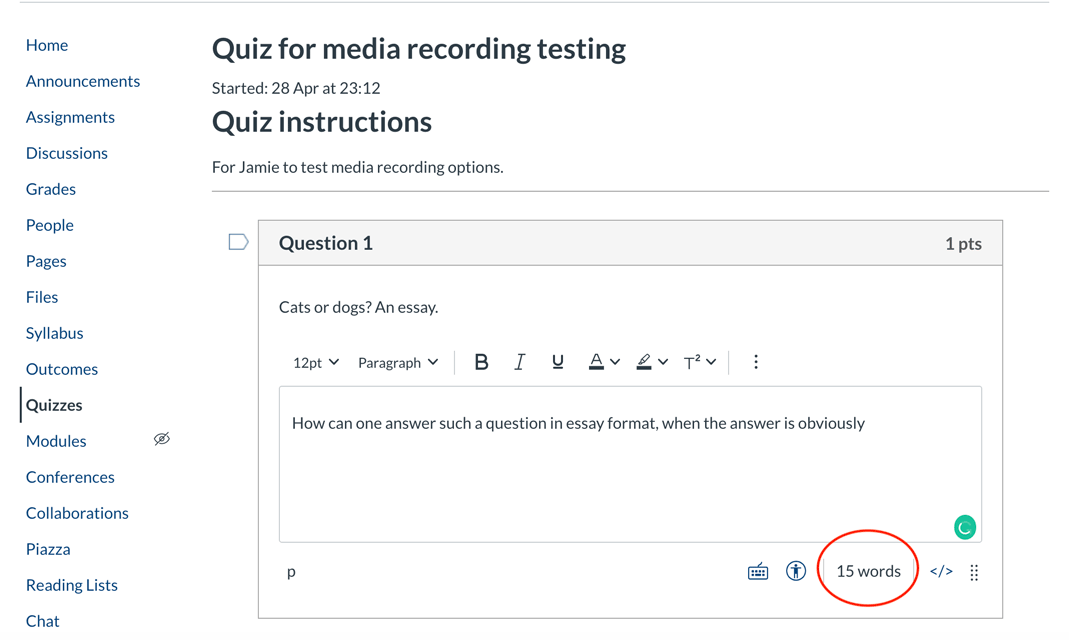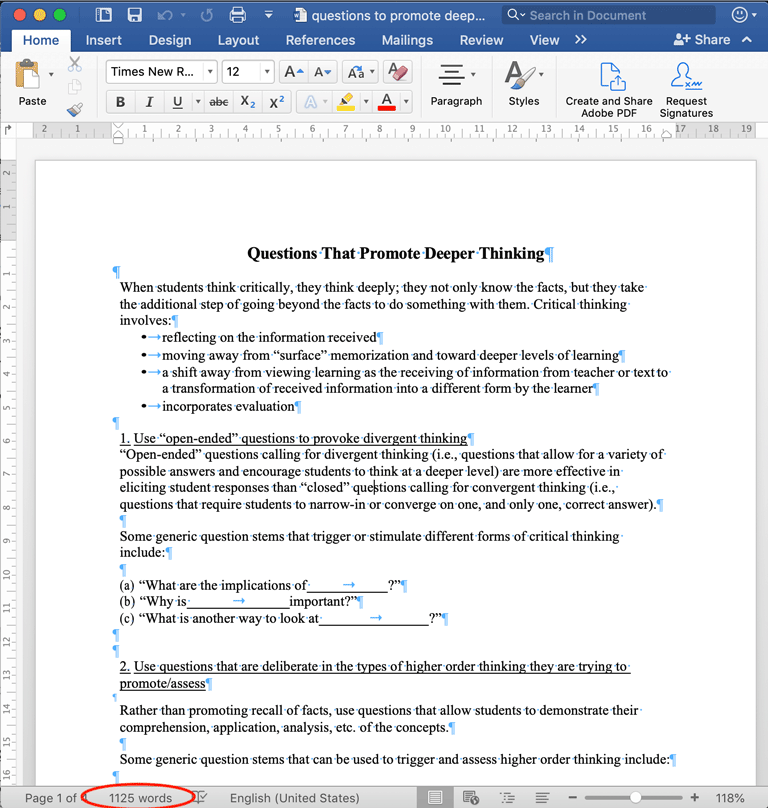Short answer and essay questions
Short answer and essay questions are types of assessment that are commonly used to evaluate a student’s understanding and knowledge.
Tips for creating short answer and essay questions
- Consider longer-answer formats that will better test student knowledge because they do not solely rely on recognition or recall of items. These include short answers (sentences or paragraphs) and essays.
e.g., What is __? or how could __ be put into practice?
- Consider the course learning outcomes. Design questions that appropriately assess the relevant learning objectives.
- Make sure the content measures knowledge appropriate to the desired learner level and learning goal.
- When students think critically they are required to step beyond recalling factual information, incorporating evidence and examples to corroborate and/or dispute the validity of assertions/suppositions and compare and contrast multiple perspectives on the same argument.
- Ensure that the item clearly specifies how the question should be answered,
e.g., paragraphs? sentences? Is bullet point format acceptable or does it have to be an essay format?
- Specify how many marks each question is worth.
- Word limits should be applied within Canvas for discursive or essay-type responses.
- Check that your language and instructions are appropriate to the student population and discipline of study. Not all students have English as their first language.
- Ensure the instructions to students are clear, including optional and compulsory questions and the various components of the assessment.
Questions that promote deeper thinking
Use “open-ended” questions to provoke divergent thinking.
These questions will allow for a variety of possible answers and encourage students to think at a deeper level. Some generic question stems that trigger or stimulate different forms of critical thinking include:
- “What are the implications of …?”
- “Why is it important …?”
- “What is another way to look at …?”
Use questions that are deliberate in the types of higher order thinking to promote/assess
Rather than promoting recall of facts, use questions that allow students to demonstrate their comprehension, application and analysis of the concepts.
Generic question stems that can be used to trigger and assess higher order thinking
Comprehension
Convert information into a form that makes sense to the individual.
- How would you put __ into your own words?
- What would be an example of __?
Application
Apply abstract or theoretical principles to concrete, practical situations.
- How can you make use of __?
- How could __ be put into practice?
Analysis
Break down or dissect information.
- What are the most important/significant ideas or elements of __?
- What assumptions/biases underlie or are hidden within __?
Synthesis
Build up or connect separate pieces of information to form a larger, more coherent pattern
- How can these different ideas be grouped together into a more general category?
Evaluation
Critically judge the validity or aesthetic value of ideas, data, or products.
- How would you judge the accuracy or validity of __?
- How would you evaluate the ethical (moral) implications or consequences of __?
Deduction
Draw conclusions about particular instances that are logically consistent.
- What specific conclusions can be drawn from this general __?
- What particular actions would be consistent with this general __?
Balanced thinking
Carefully consider arguments/evidence for and against a particular position.
- What evidence supports and contradicts __?
- What are arguments for and counterarguments against __?
Causal reasoning
Identify cause-effect relationships between different ideas or actions.
- How would you explain why __ occurred?
- How would __ affect or influence __?
Creative thinking
Generate imaginative ideas or novel approaches to traditional practices.
- What might be a metaphor or analogy for __?
- What might happen if __? (hypothetical reasoning)
Redesign test questions for open-book format
It is important to redesign the assessment tasks to authentically assess the intended learning outcomes in a way that is appropriate for this mode of assessment. Replacing questions that simply recall facts with questions that require higher level cognitive skills—for example analysis and explanation of why and how students reached an answer—provides opportunities for reflective questions based on students’ own experiences.
More quick, focused problem-solving and analysis—conducted with restricted access to limited allocated resources—will need to incorporate a student’s ability to demonstrate a more thoughtful research-based approach and/or the ability to negotiate an understanding of more complex problems, sometimes in an open-book format.
Layers can be added to the problem/process, and the inclusion of a reflective aspect can help achieve these goals, whether administered in an oral test or written examination format.
| Example question | Original format | Alternative format, focusing on explanation | ||||||||
|---|---|---|---|---|---|---|---|---|---|---|
|
Example 1: Knowledge recall multiple choice or single correct answer
|
|
|
||||||||
|
Example 2: Analytic style multiple choice question or short answer
|
|
|
Acknowledgement: Deakin University and original multiple choice questions: Jennifer Lindley, Monash University.
Setting word limits for discursive or essay-type responses
Try to set a fair and reasonable word count for long answer and essay questions. Some points to consider are:
- Weighting – what is the relative weighting of the question in the assessment?
- Level of study – what is the suggested word count for written assessments in your discipline, for that level of study?
- Skills development – what skills are you requiring students to demonstrate? Higher level cognitive skills, such as evaluation and analysis, tend to require a lengthier word count in order to adequately respond to the assessment prompt.
- Referencing – will you require students to reference their sources? This takes time, which should be accounted for in the total time to complete the assessment. References generally would not count towards the word count. Include clear marking guidelines for referencing in rubrics, including assessing skills such as critical thinking and evaluation of information.
Communicate your expectations around word count to students in your assessment instructions, including how you will deal with submissions that are outside the word count.
E.g., Write 600-800 words evaluating the key concepts of XYZ. Excess text over the word limit will not be marked.
Let students know how to check the word count in their submission:
- Show word count in Inspera – question type: Essay.
- In Canvas Quizzes, the word count of Essay questions appears as a counter in the bottom-right of the screen.

- In Word, the word count of a document can be viewed at the bottom-left of the screen.

See also
Multi-choice questions
Write MCQs that assess reasoning, rather than recall.
Page updated 16/03/2023 (added open-book section)
